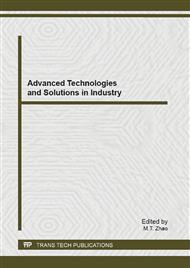p.554
p.558
p.563
p.567
p.575
p.579
p.584
p.589
p.593
Digitized Multi-Exponential Deep-Level Transient Spectroscopy (DLTS) Using the Padé-Laplace Algorithm
Abstract:
We apply the Padé-Laplace algorithm to automatically extract from DLTS multi-exponential transient decay measurements, the amplitude and the time constant of each discrete exponential component as well as the number of components without a priori assumption. Then, after setting restriction on the resolution of the multi-exponential problem itself due to noise, we present the field of this method numerical validity. Finally, the performance obtained on real signals is shown.
Info:
Periodical:
Pages:
575-578
Citation:
Online since:
June 2013
Keywords:
Price:
Сopyright:
© 2013 Trans Tech Publications Ltd. All Rights Reserved
Share:
Citation:


